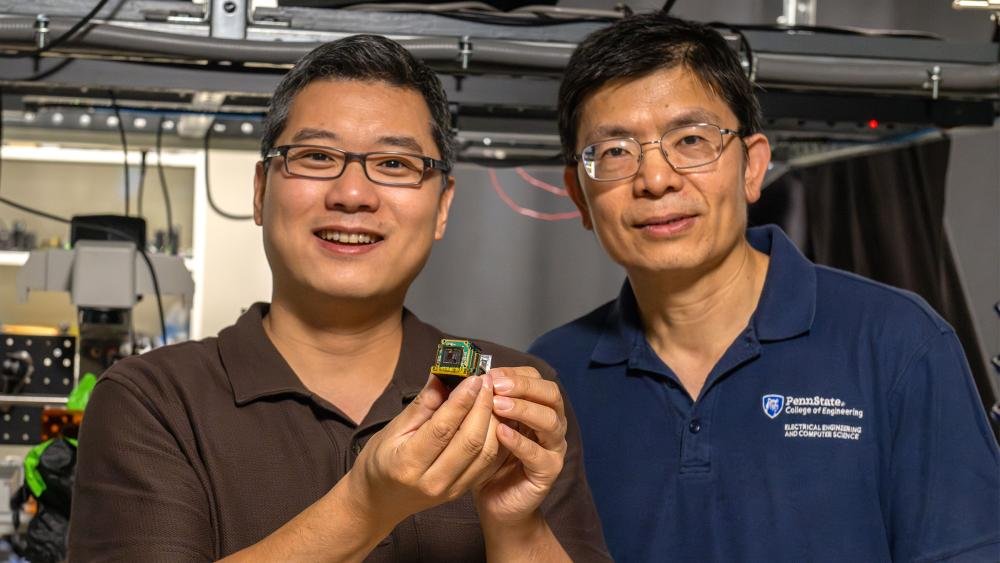When people talk about innovation in renewable energy and sustainability, they often focus on the technology itself—solar cells, materials, or urban design. But behind those advances are researchers whose quiet dedication drives the field forward. One of those names is Zhiwen Gao a scholar known for his work in advanced materials, solar cell technology, and ecological studies. Though his career bridges several fields, a common thread runs through his research: finding ways to make human progress align with environmental resilience.
Early Foundations
Zhiwen Gao trained as a scientist in a period when global urgency around clean energy and climate adaptation was accelerating. His academic journey built a strong base in materials science and engineering, but he was not content to stay confined within one discipline. Instead, he branched into environmental research, studying how ecosystems adapt to human-driven change. This unusual combination—deep technical knowledge of solar energy systems and curiosity about ecological balance—makes his career distinctive.
Research in Materials and Solar Energy
One of Gao’s most recognized areas of expertise is in perovskite solar cells, a next-generation photovoltaic technology. Traditional silicon solar panels are efficient but costly and rigid. Perovskites, on the other hand, promise high efficiency at lower production costs and with more flexibility in application.
The challenge is that perovskite solar cells tend to degrade quickly, losing efficiency under light, heat, and moisture. Gao’s research zeroes in on the interfaces within these devices—the boundary layers where different materials meet. By improving stability at these interfaces through engineering and chemical modification, he has contributed to making perovskite technology more reliable. This kind of work is highly technical, yet it has global importance. If solar energy becomes cheaper and more stable, adoption will accelerate, reducing dependence on fossil fuels.
His studies also explore nanomaterials and composite structures. By analyzing how materials behave at the microscopic level, Gao and his collaborators have shed light on how to strengthen devices and improve their electrical properties. In short, his lab-based investigations fuel practical innovations in renewable energy.
Urban Ecology and Environmental Studies
Beyond materials science, Gao has also made significant contributions to urban ecology. Cities are expanding at a rapid pace, often at the cost of biodiversity and green space. Gao’s ecological research focuses on how spontaneous plants—those that grow without deliberate human planting—adapt to different levels of urbanization. By surveying plant diversity in cities and studying the patterns of soil seed banks, he helps uncover how urban environments influence ecological resilience.
This research is not just academic. Urban planners and conservationists need this data to design greener, more livable cities. By understanding which species thrive or disappear under urban pressure, policymakers can make informed decisions about land use, green belts, and sustainable development.
Bridging Science and Society
What makes Gao’s profile stand out is his interdisciplinary reach. He operates in laboratories refining high-tech materials but also steps into the field to examine plant communities in urban wastelands. This combination shows a belief that solutions to environmental challenges must come from both technology and ecology. Renewable energy without ecological thinking risks being narrow. Ecology without technological innovation risks being insufficient. Gao’s career suggests that real progress comes from bringing these perspectives together.
Leadership and Collaboration
Like many active researchers, Gao’s impact is multiplied by collaboration. He works with fellow scientists across institutions, publishes joint studies, and mentors younger scholars. His affiliations, including universities in China, position him at the heart of growing academic networks focused on sustainability. By engaging in both national and international projects, he ensures that his work contributes not only locally but also globally.
Why His Work Matters
In a world facing climate change, urbanization, and energy insecurity, Gao’s contributions resonate widely:
- Cleaner energy: By improving solar technologies, he helps pave the way for widespread renewable adoption.
- Biodiversity awareness: His ecological studies remind us that cities are also ecosystems worth protecting.
- Interdisciplinary solutions: He models how science can bridge fields to tackle complex problems.
Whether read in scientific journals or cited in policy discussions, his work embodies the idea that sustainable progress must be holistic.
Frequently Asked Questions (FAQs)
Q1: Who is Zhiwen Gao?
Zhiwen Gao is a researcher working at the intersection of materials science and environmental studies. He is recognized for his studies on perovskite solar cells, nanomaterials, and urban ecology.
Q2: What are his main research areas?
His main fields include renewable energy technologies, particularly perovskite solar cells, and ecological studies of urban environments. He investigates both how to improve the stability of solar devices and how plant communities adapt to urbanization.
Q3: Why is his work on perovskite solar cells important?
Perovskite solar cells are seen as a future cornerstone of renewable energy because they can be cheaper and more flexible than silicon panels. However, they have stability issues. Gao’s work on interface engineering makes them more reliable, which is critical for scaling the technology.
Q4: What role does he play in environmental science?
He studies plant diversity and soil seed banks in cities, exploring how different forms of urbanization shape ecological patterns. His findings support urban sustainability planning.
Q5: How does his career show interdisciplinarity?
Instead of staying within one niche, Gao connects two worlds: advanced material research and ecological fieldwork. This dual focus underscores the idea that sustainable solutions need contributions from both technology and environmental science.
Q6: What impact could his research have on everyday life?
If perovskite solar cells become stable enough for mass use, households and industries could access cheaper, more efficient solar energy. At the same time, his ecological insights can lead to greener urban planning, meaning more resilient and healthier cities.
Q7: Is he only active in research, or does he influence practice too?
While most of his output is academic, his studies are directly relevant to real-world challenges. Policymakers, renewable energy companies, and urban planners can all draw from his findings.
Conclusion
Zhiwen Gao represents the kind of researcher the 21st century needs: one who crosses boundaries between technology and ecology, between laboratory and landscape. His work on solar energy points toward a cleaner, more reliable energy future, while his ecological studies ensure that cities remain livable and diverse. Together, these strands of research echo a single message—human progress and environmental sustainability are not rivals but partners.




